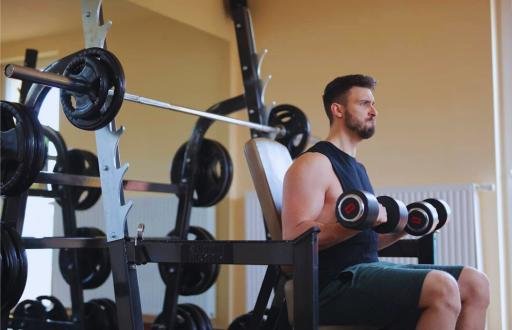Powerlifting as much as it is the lifting ofWeights is strength, discipline, a determination that is unyielding. That is the process that most go through and one that starts in what may be a rather unsophisticated environment – the gym. From start, the training can be done at a local 24 Hour Fitness or at one of the specialized powerlifting facilities and no less success because like in any other sport, the way to the same is rocky with all the blood, sweat, tears, and lessons to be learned on the way to the top.
Understanding Powerlifting

At its core, powerlifting focuses on three main lifts: The three power lifts or better still, the two most recognized compound movements, namely: The squat, the bench press, and the deadlift. Every lift requires muscle power and accuracy as well as skillful control of the moves by the players. That said, let me note that as you explore this sport, you’ll find out that powerlifting involves just as much psychological strength as it does muscle strength.
The Beginner Phase: Laying the Foundation

So there can be nothing as thrilling and intimidating as beginning your initial power lifting training. But often, due to abundance of sources, even a newcomer is flooded with information that is available. Here’s a breakdown of what to focus on:
- Learn the Basics : It is very important to know the right technique of each lift. Perhaps you should get a trainer for your staff or attend a workshop. There is a lot of information on the Internet and reading gym reviews will help to understand all the pros and cons. For the visually impaired, it is also possible to use video tutorials as an effective learning aid, where visual examples are best explained.
2. Set Realistic Goals : When one starts practicing the learned concepts, it is the best practice to set some easy to achieve goals. Avoid the proclivity of seeking world record in a particular field but rather work on the continual advancement. Not only does it enhance confidence but also motivation is retained at the highest level. You ought to record your experience in a training journal to ensure that you do not stray off from the main objective.
3. Create a Workout Routine : Having a structured plan of workouts depending on your target will see you through the program. Add strength exercises, auxiliary movements and mobility to get the best out of training. This is the area where you should also mention the rest days; yes, it is equally important to rest as it is to exercise.
4. Find Your Community : Nice it would be to share information with other people who also interested in lifting weights. Subscribe to powerlifting clubs in your community or check out the online boards for information. Having chance to share experiences in accomplishing these goals, we get new tips and encouragement, and the process becomes less lonely.
The Intermediate Phase: Building Strength

The second stage, then, is to build up the structure and the third is to train in the art of acquisition and to gain muscle. This is where it gets a little more personal or a little more dangerous, depending on how you look at it.
1. Increase Intensity : Use progressive overload to increase load, and do so, deliberately. Listen to your body. Periodize your training and adjust the intensity and volume training which will eliminate a trainer. It is known at the same time to be effective in enhancing strength improvement and minimizing the probability of an injury.
2. Nutrition Matters : It is important to eat the right food at the right time. A balanced diet that involves a lot of protein, good fat content, and carbohydrates will enable you perform your exercise and recover. It should be noted that nutrition does not only mean investing in your body as you do by buying a gym membership. One might want to seek advice from a nutritionist on the type of diet to take depending on ones training regimen.
3. Track Your Progress : Record all your lifts, sets and reps as you go. It’s recommended to have a periodic check on your performance and see patterns that would require further modification of your training regimen. This process can be made easier through the use of apps, or fitness trackers as they will offer a clue into the performance.
4. Mindset and Mental Training : However, as you progress, mental strength attribute is critical for your performance. As such, elements like visualization, meditation, and even positive self- talk to work round and improve on the challenges that you may face in the course of working. It is wise to integrate some form of mindfulness in your schedule for better concentration and enhanced endurance.
The Advanced Phase: Competing and Beyond
In the advanced stage you start thinking about competition and all other factors of your business. This is where true powerlifting comes into play.
1. Understanding Competitions : It may be a little scary to compete, but overall it allows student to show our efforts. Get to know with the code of conduct of powerlifting competitions. Every federation has its rules and regulations in such a case so one needs to read and find more. Watch local conveniences as an observer in order to comprehend the context and reality.
2. Mental Preparation : It is equally important to understand that competition has a great psychological aspect. The use of analogies and imaging and the practice of running through ideas in our mind can improve our performance on the platform. I want to remind you that champions are built in the mind long before they are showcased in a competition. You should consider consulting a sports psychologist if you undergo pressure or anxiety just before a competition.
3. Celebrate Your Journey : No matter if you set a new record in lifting weights or not, try to focus on your experience. Take time to be happy: Success is no success if there is no Hurray!. This kind of frame of mind development leads to the adoption of a life-long fitness and health practice. It also found that sharing your stories can also help others on their path especially the members of the community.
4. Continuous Learning : The world of powerlifting is constantly changing. Learn more about new training methods, approaches to diet and effective recovery processes. Watch seminars, read books and follow other authorities in the subject of this sport. Continuing education will help maintain that training is up to date and thus as effective as possible.
Conclusion
The powerlifting journey is something like walking through a mysterious championship and gradual building of character. Starting from making basic movements in the gym to standing on the competition platform is something which can be learned from every phase. Accept those challenges in this sport, every successful sportsmen once in a while was a beginner. Hard work, willingness to learn, willingness to develop, and willingness to go the extra mile will be your key to success.
Powerlifting is exercising to see lean improvements, but also it is about establishing mental toughness, nurturing camaraderie, and truly enjoying the process of change into the superior version of oneself. Well, put on your lifting shoes, take hold of that barbell and make a start of your powerlifting experience right now!
FAQ :
What does a powerlifter require?
To start with, you will just need a proper shoes for squatting, a weightlifting belt and a barbell and some plates. Later on you may get knee sleeves, wrist wraps, and for lifting events, to wear during the competition.
How many times a week should I work out for powerlifting?
Power lifters are supposed to train 3-5 days a week, concentrating on three principle movements and additional exercises. Dependant on the experience of the patient and there ability to recover they can range in frequency.
Are first-time athletes allowed in powerlifting?
Absolutely! Most competitions hold sub-sections for easy deterrents for the new players or crews to contend with. Where strategic competition is suitable it can be used to effectively establish and review progress against targets.
What’s the role of nutrition in powerlifting?
Lucas, E. -. 2014. Exploring nutrition’s role in performance and recovery. Available at www.iecoder.com. You should follow eating patterns that will help you build strength in accordance to in your training regimen.
What are the mistakes people make when practicing powerlifting?
Some of the common mistakes include: They rarely warm up, many of them do not perform their exercises correctly, and they do not heed to their body signs. There is nothing as crucial as correcting the technique and adequate rest to ensure short of injuries.
.










